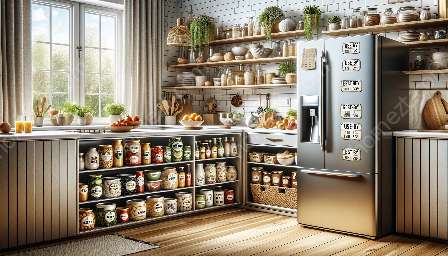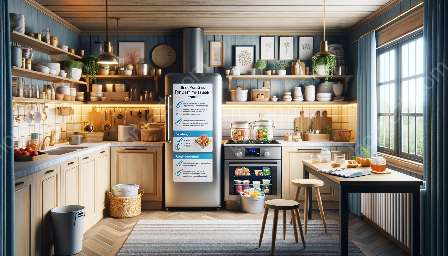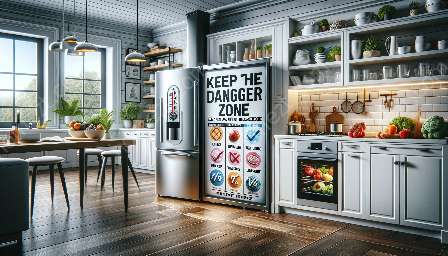Home-cooked meals are often perceived as healthier and safer than restaurant-prepared foods. However, many people are unaware of the potential dangers of allergens in home-cooked foods. Understanding and addressing these risks is crucial for maintaining food safety in home kitchens and ensuring overall home safety and security.
Common Allergens in Home-Cooked Foods
Allergens are substances that can trigger allergic reactions in sensitive individuals. In home kitchens, common allergens include:
- 1. Nuts and Seeds: Peanuts, tree nuts, and sesame seeds are often used in various home-cooked dishes, including baked goods, salads, and stir-fries.
- 2. Dairy Products: Milk, cheese, and other dairy ingredients are prevalent in cooking and baking, posing a risk for individuals with lactose intolerance or dairy allergies.
- 3. Gluten: Wheat and gluten-containing grains are ubiquitous in many home-cooked meals, making it challenging for individuals with gluten sensitivities or celiac disease to avoid exposure.
- 4. Shellfish and Fish: Seafood dishes prepared at home may contain allergens that can cause severe allergic reactions in susceptible individuals.
- 5. Eggs: Egg allergies are common, and eggs are often used as ingredients in numerous home-cooked recipes, from breakfast dishes to baked goods.
Risks and Impacts of Allergen Exposure
Exposure to allergens can lead to a range of adverse effects, from mild discomfort to life-threatening anaphylaxis. Some potential risks and impacts of allergen exposure in home-cooked foods include:
- 1. Allergic Reactions: Symptoms may include hives, swelling, nausea, vomiting, difficulty breathing, and in severe cases, anaphylaxis.
- 2. Cross-Contamination: Improper handling of allergenic ingredients can result in cross-contamination, spreading allergens to other foods and surfaces in the kitchen.
- 3. Foodborne Illness: Allergic individuals may inadvertently consume foods containing allergens due to mislabeling or improper storage, leading to illness and discomfort.
- 1. Ingredient Labeling: Clearly label all allergenic ingredients and store them separately from other non-allergenic foods to prevent cross-contamination.
- 2. Communication: If hosting guests or cooking for family members with known food allergies, communicate openly and inquire about their specific allergens to prepare safe meals.
- 3. Education and Awareness: Stay informed about common food allergens, their sources, and the potential risks of allergen exposure in home cooking.
- 4. Safe Cooking Practices: Practice proper food handling, storage, and cleaning to minimize the risk of cross-contamination and accidental allergen exposure.
Preventive Measures and Tips
To minimize the dangers of allergens in home-cooked foods and ensure food safety in home kitchens, consider implementing the following preventive measures and tips:
Food Safety in Home Kitchens
Food safety in home kitchens encompasses various practices aimed at preventing foodborne illnesses, contamination, and allergic reactions. It involves proper storage, handling, cooking, and serving of foods to maintain their quality and safety. Understanding the dangers of allergens in home-cooked foods is essential for implementing comprehensive food safety measures in home kitchens.
Home Safety & Security
Home safety and security extend beyond physical measures and also encompass the safety of occupants, including their dietary needs and potential allergen exposure. By addressing the dangers of allergens in home-cooked foods, homeowners can contribute to a safer and more secure living environment for themselves and their families.
In conclusion, recognizing and addressing the dangers of allergens in home-cooked foods is crucial for maintaining both food safety in home kitchens and overall home safety and security. By staying informed about common allergens, implementing preventive measures, and practicing safe cooking practices, individuals can minimize the risks associated with allergen exposure and create a safer cooking environment at home.

























